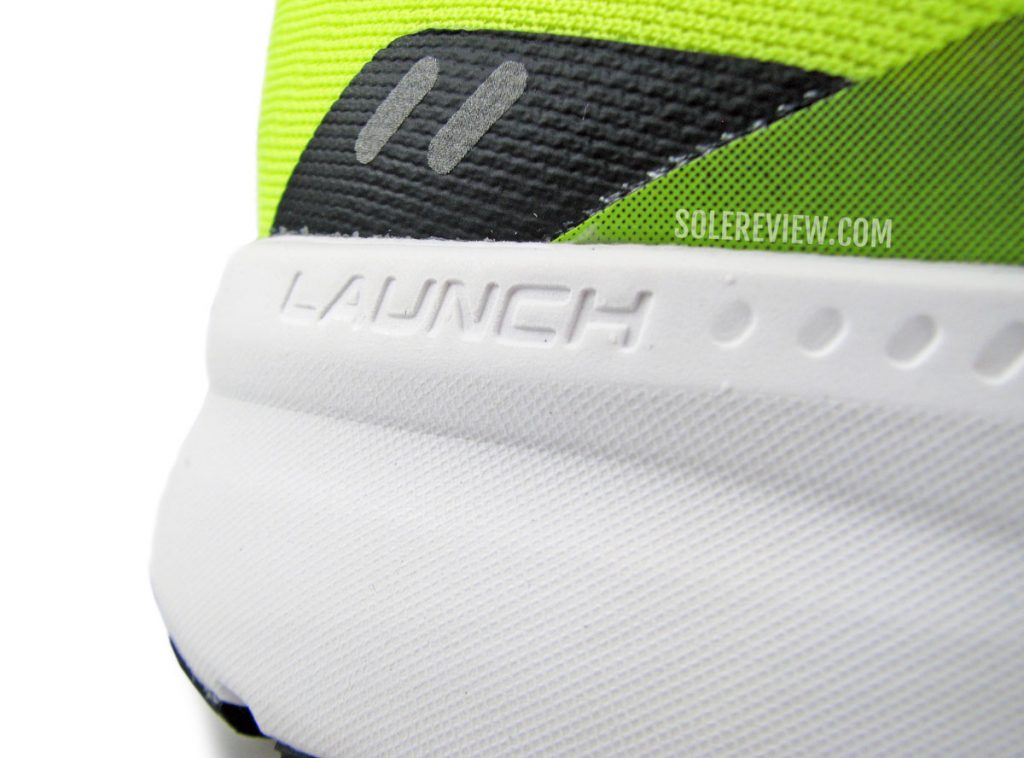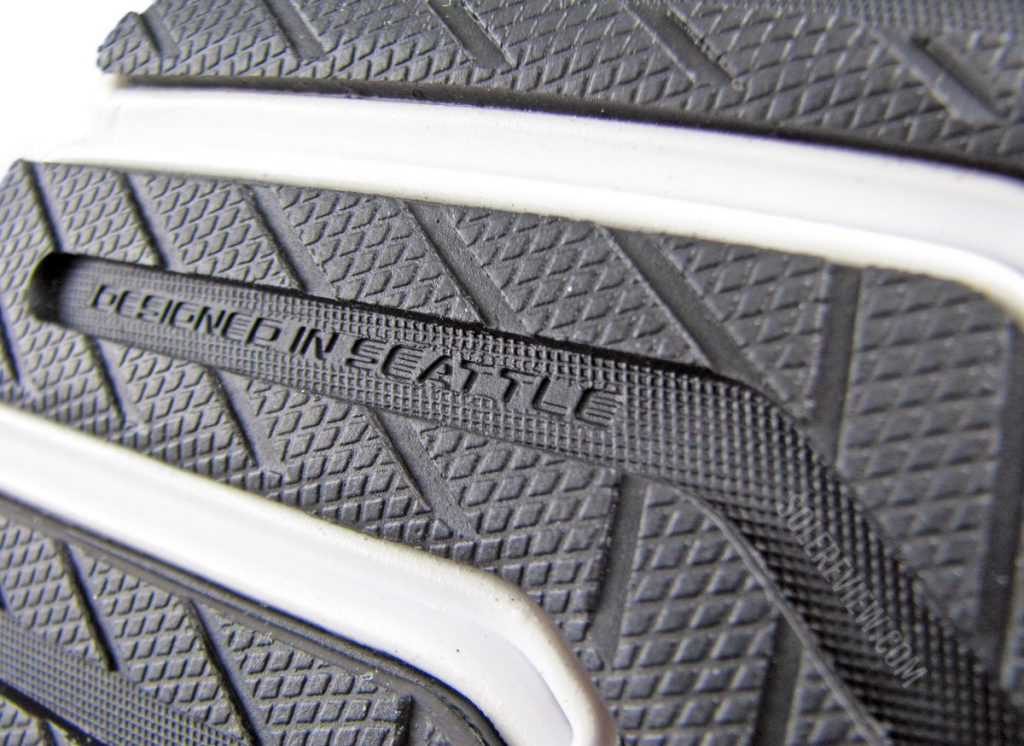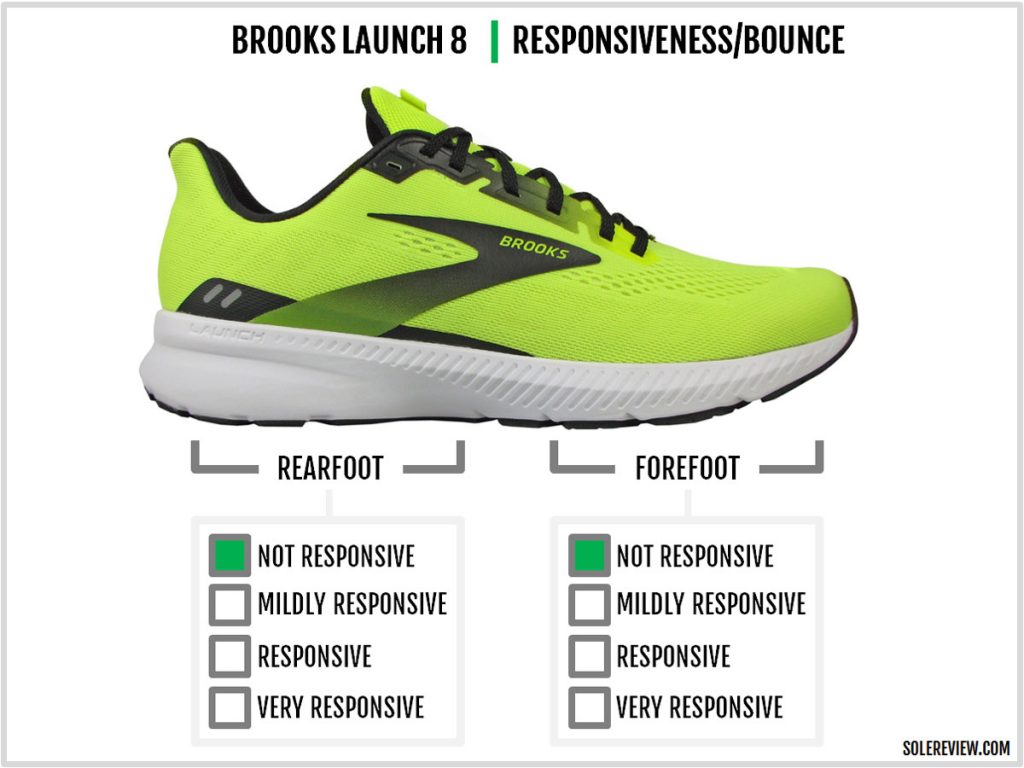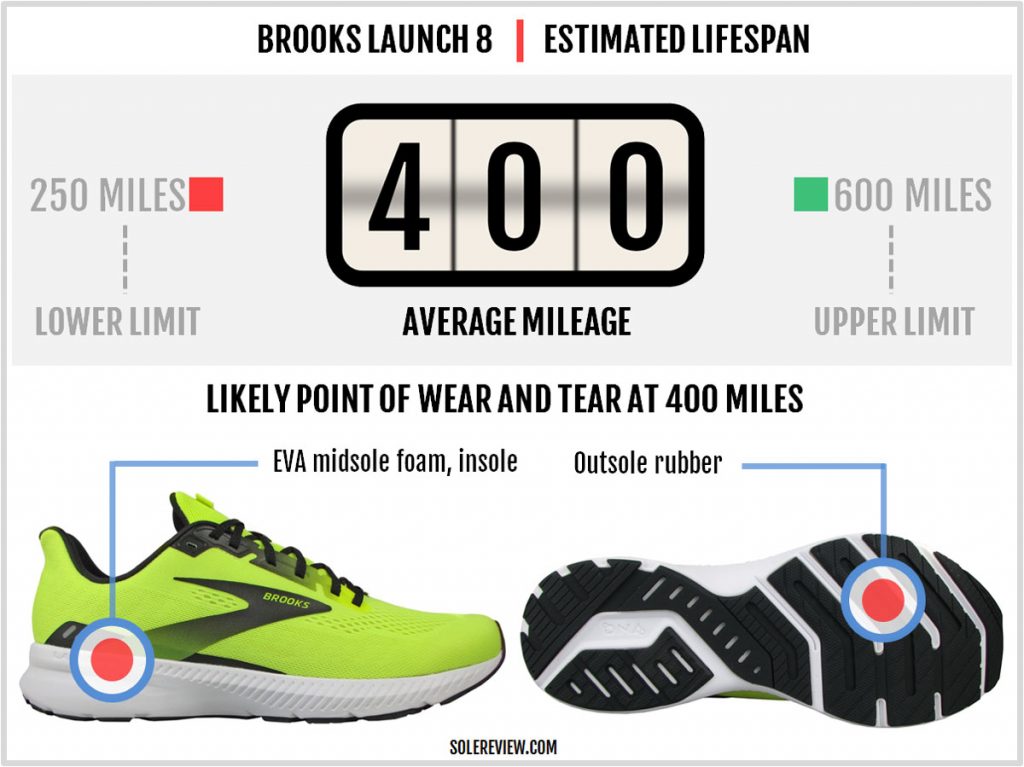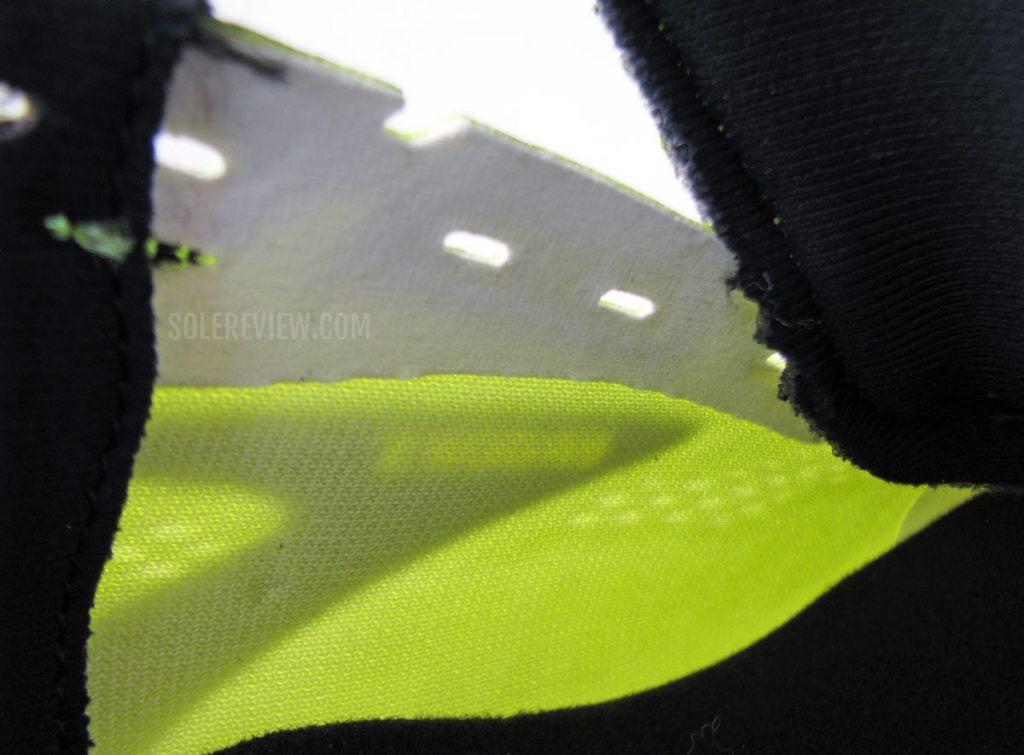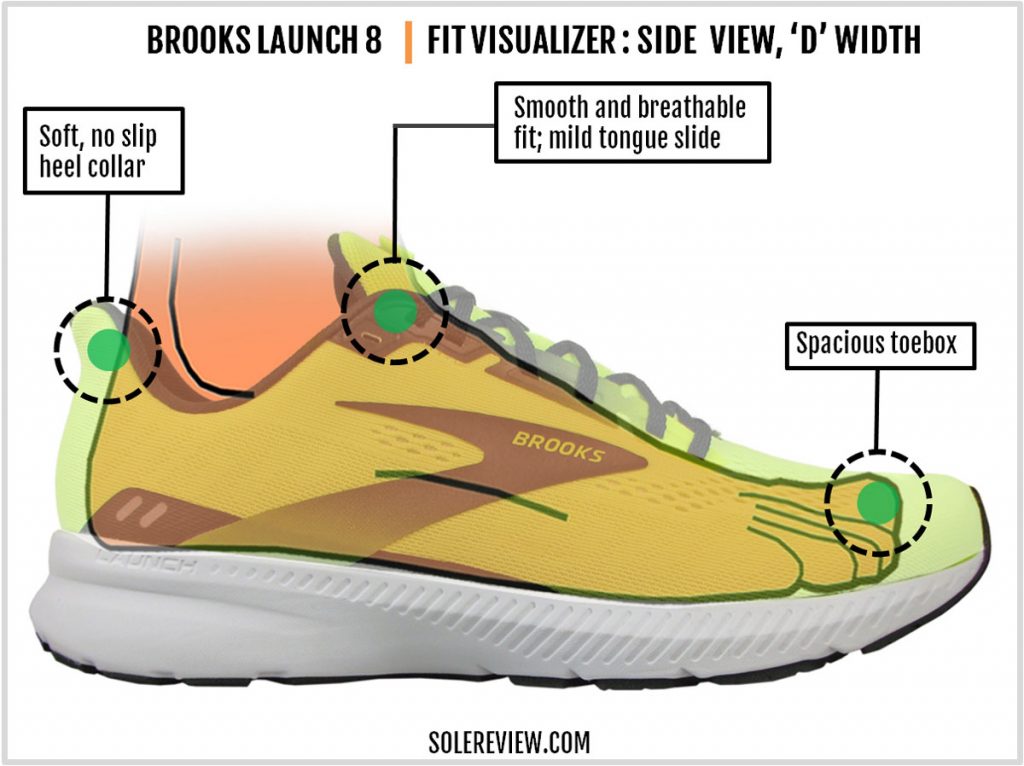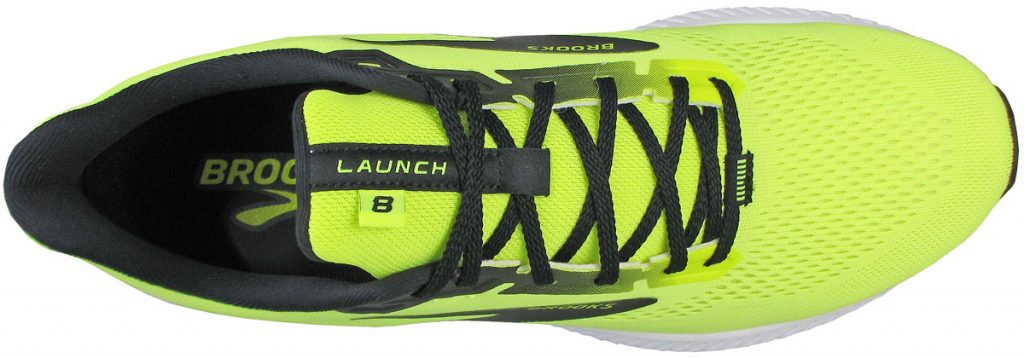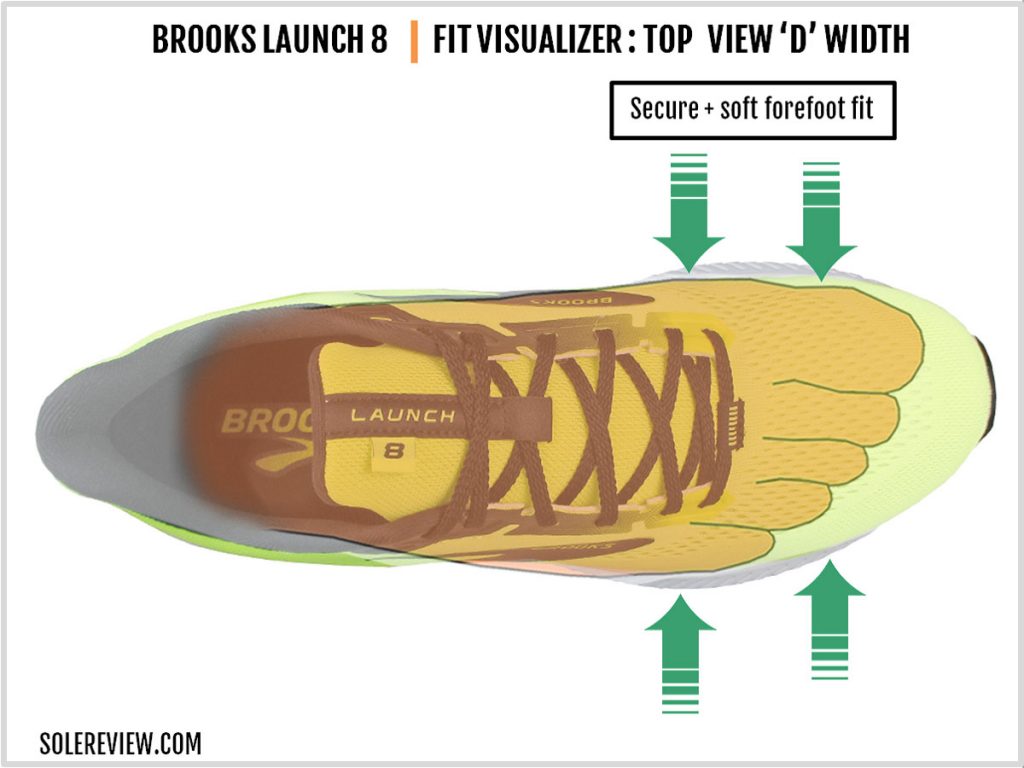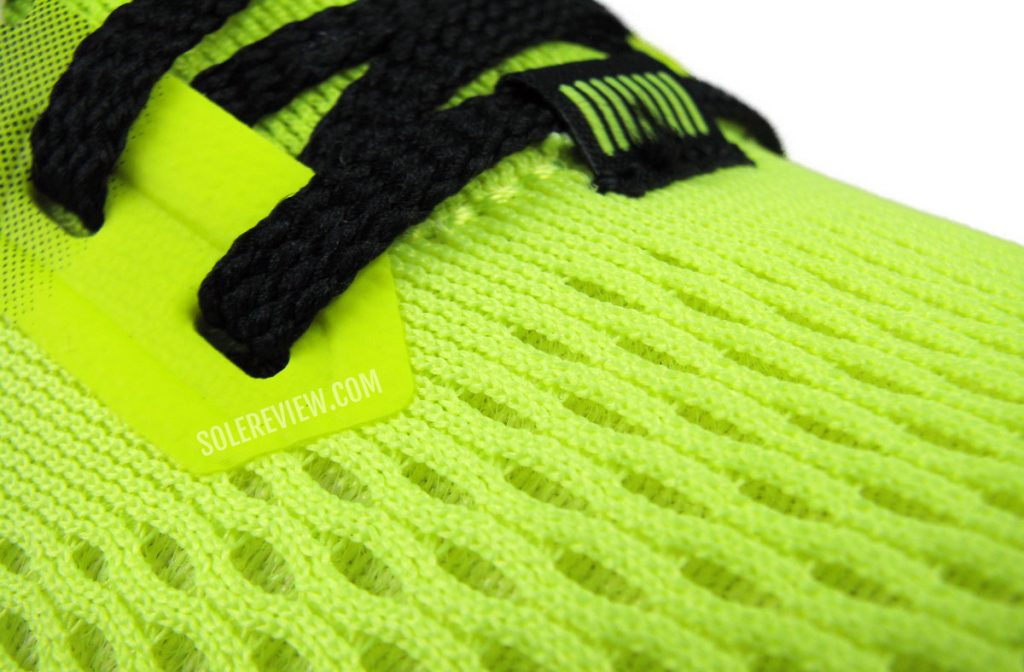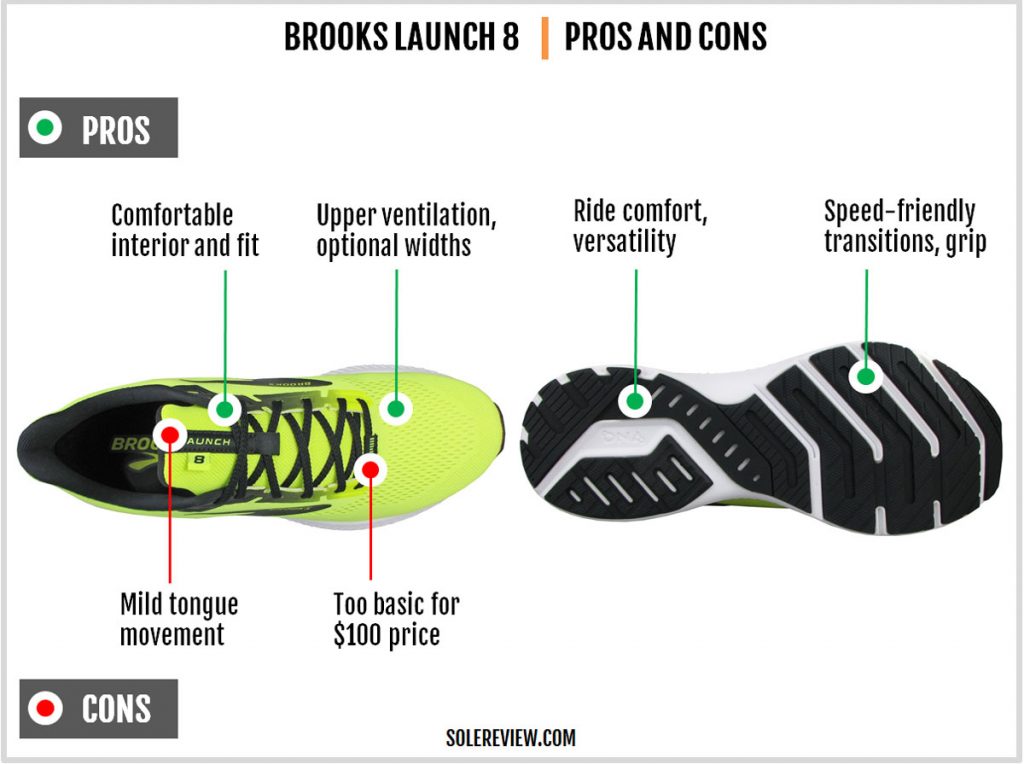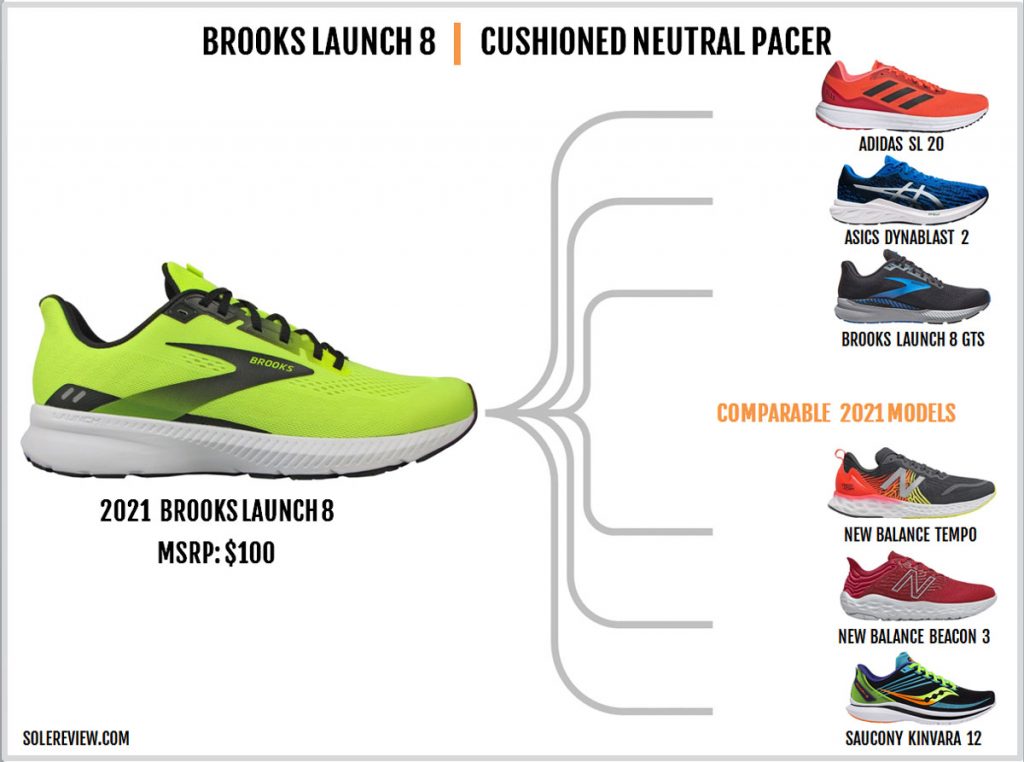INTRODUCTION
If you’ve previously steered clear of the Brooks Launch due to its firm ride, then it’s worth giving the Launch 8 a re-try.
The Launch is Brooks’ entry-level (kinda, because $100) everyday trainer, and it has been so for more than a decade. The numeric suffix is somewhat misleading; though the latest version is the Launch 8, it doesn’t take into account the chronological gap between 2009 and 2013 – the Launch 2 followed four years after the V1.
In 2013, Brooks ‘relaunched’ the model on popular demand. In retrospect, it made sense. At the time, there were very few neutral trainers that offered a firm, speed-friendly ride with sufficient cushioning for distance runs. Also, the $100 price segment wasn’t as crowded as it is today.
The cushioning firmness of the Launch’s EVA midsole was ideal for faster runs, yet didn’t have the punishing ride character of racing flats. In short, the Launch was the perfect middle ground between bulked-up neutral running shoes (like the Ghost) and road racers.
As with most shoes that serve a particular niche, the Brooks Launch wasn’t for everyone.
The firm ride was off-putting for many runners who craved comfort over speed; so much so that we received an angry email from a reader who had purchased the Launch 4 based on our review and said that it felt ‘like a piece of wood taped to your foot.’
The Launch 8 is softer than any of the previous models, and that does a lot to broaden its mainstream appeal. And if you’re an existing Launch loyalist, there’s no reason for concern – the V8 retains all the signature elements that have made the series successful.
It remains a pace-friendly and versatile neutral trainer, except that it’s infused with a higher level of ride comfort.
THE BROOKS LAUNCH 8 vs. 7
Apart from the softer ride, the V8 has a new upper and reconfigured outsole geometry. The engineered mesh is softer and breathes better than the last model. The heel cup has a slight Achilles ’lip’ that increases the fit comfort without sacrificing grip.
While both models have a full outsole coverage, the Launch 7’s traction was marginally better because of the lug design.
Having said that, a firmer ride usually makes the outsole grip better, so the V7 had a natural advantage over the V8.
The softer midsole of the Launch 8 helps it shed 0.4 ounces over the outgoing model.
THE RIDE EXPERIENCE
The Brooks Launch has an uncomplicated midsole; from a ride perspective, what you see is what you get.
A single-density EVA foam midsole (aka BioMogoDNA) produces nearly all of the cushioning; there are no hidden mechanisms or inserts. The remainder of the cushioning is produced by the insole and foam lasting.
The Launch 8’s heel is 10 mm taller than the forefoot, thus creating a padded ride experience for runners who land with their heel first.
That’s not to say that the Launch 8 isn’t suitable for forefoot runners. On the contrary, the minimal heel overhang ensures that forefoot and midfoot landings are very doable.
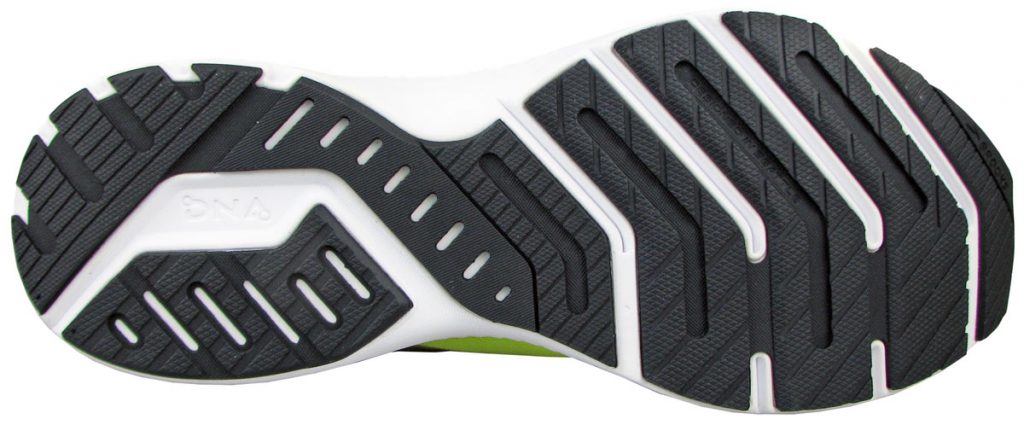
The midsole is generously rubber-clad. The heel has a harder rubber, whereas the forefoot has softer blown rubber.
The single-density construction also makes the transitions smooth, with the full rubber outsole serving an important function in making the loading process efficient.
Even though the Launch 8 is noticeably softer than the 7 and earlier versions, the cushioning is very pace-friendly.
The new Launch 8 is more versatile in the sense that while it’s always up for a peppy workout at 4:30 min/km or 7 min/mile pace range, it’s also comfortable enough for slower runs.
The relatively harsh ride of the older Launch models limited their mainstream adoption. The firm ride was great during speed runs, but felt blocky at easy speeds. Simply put, the previous versions felt too stiff during easygoing runs.
The V8 achieves a better balance between firm and soft, so you can have your cake and eat it, too.
The midsole cushioning is also helped by the removable insole and foam lasting. These create a cushy layer on top that makes leisurely runs (6 min/km, 10 min/mile range) comfortable; the blown rubber forefoot outsole ensures that the landings and transitions aren’t harsh.
The outsole traction is good, if not great.
Given the Launch 8’s EVA midsole, a bouncy ride isn’t something that’s expected of the shoe. And it’s not – responsiveness is non-existent here. In lieu, the humble foam slab provides plenty of ground feedback for quick turnovers.
Since the midsole isn’t overly soft, the foot doesn’t have to exert a lot of effort during the push-off phase. The firm undertone of the thinner forefoot means that the foot doesn’t sink in, so there’s no sense of wasted effort during the transition process.
The curved insole provides a sense of under-arch support, but the midsole doesn’t have a flared sidewall. The latter is available on the GTS version of the Launch 8, so it’s worth giving those a try as well. Both the versions are nearly the same except for the raised sidewalls, and without any change in the neutralness.
We wish we had more to say about the Launch 8, but there isn’t. This is a very simple shoe with very predictable behavior.
The medium-soft ride will appeal to a wide demographic, be it seasoned pros who like peppy neutral trainers or runners who want their trainers to be comfortable enough for everyday runs without burning a hole in their pocket.
Also, if easy runs are all that one wants from the Launch 8, that’s cool too.
A Brooks shoe like the Glycerin 19 adds rotational value to the Launch 8.
The Glycerin delivers a plush ride that’s great for high-mileage outings where comfort, not speed takes precedence. The Hyperion Elite 2 is the brand’s pinnacle carbon-plated (and cushioned) racer, but better value is found in the Saucony Endorphin Speed 2 instead.
We don’t know what Brooks intends to do with the racing flat category, but it seems like the Hyperion flat (not to be confused with the H-Tempo or Elite) will be retired.
But since it’s still available for sale, the Hyperion racer continues to be an option for short races and such. We’d rather pick the Saucony Type A9 though; it’s not very expensive and possesses race-worthy performance for all-out 5K and 10K blasts.
For a diverse and enjoyable rotation, our three shoe recommendation would be the Endorphin Speed 2 and Type A9 along with the Launch 8.
The Nylon-plated Endorphin Speed combines the best of both worlds – the plate makes the ride snappy and fun, whereas the PEBA foam-based midsole adds lightweight comfort through its distance-friendly cushioning.
IS THE BROOKS LAUNCH 8 DURABLE?
Though the Launch’s upper appears slightly flimsy when compared to more expensive shoes like the Ghost 14, that should not result in premature wear and tear.
High friction areas like the lacing panel are reinforced with a backer.
The EVA foam-based midsole will lose its cushioning over time – and so will the insole and lasting. Based on our initial ownership experience, we’d rate the lifespan at 400 miles.
THE UPPER DESIGN AND FIT
Except for a few modern touches like the flared Achilles lip and single-piece engineered mesh, the Launch 8’s upper is as conventional as it gets. The tongue lacks a sleeve, so there’s some slide, but only just.
The tongue flap is fairly wide, so that prevents excessive sideways movement. The seamless exteriors (the logos and eye-stay are fused) ensure a smooth fit without any lumpy pressure spots.
The softer cushioning isn’t the only thing that’s new on the Launch 8.
The upper is softer and more pliable too, and hence molds better around the foot than the past models. The forefoot fit is just right – in other words, it’s secure without being narrow.
The foam-padded tongue filters the lacing pressure, and it’s long enough to cover the runner’s loop (last lacing row) when deployed.
The heel collar shares its soft lining with the tongue; an internal heel counter cups the foot for a secure grip.
The true-to-size interior means that there’s a thumb’s width of space ahead of the toes. The balanced proportions of the toe-box result in a sufficient ceiling height; there’s a thin bumper too.
The spacer mesh keeps the foot well-ventilated, so the interiors are breathable enough to be featured on our curated list of summery shoes.
There’s some reflectivity on the heel, and that’s way better than not having any.
PROS AND CONS
The Brooks Launch’s retail price hasn’t changed since its inception, but nowadays a $100 MSRP has ceased to be entry-level – something that the Launch used to be.
Even though the Brooks Launch 8 is a versatile daily trainer, the rest of the industry has upped their price-value game.
Reebok sells the excellent Floatride Energy 3 with an expanded Polyurethane midsole at the same price. Nike sells many models at double-digit prices, and shoes like the Winflo have premier cushioning tech. (Related read: The best affordable running shoes)
While we’re aware that Brooks sells the Anthem 4 and Signal 3 at $85, that doesn’t help the Launch 8’s case.
The pricing is the only reason why the Launch’s scorecard gets a ‘good’ instead of a ‘great’ rating. Functionally speaking, the Launch 8 isn’t inferior to the 6 or 4, but it exists in a different context. As they say, the bar has been raised.
The Brooks Launch 8 would be an excellent value proposition at $80. Its excellent soft-firm blend makes it a very comfortable running shoe that’s also capable of speedy workouts. The true-to-size upper is soft and offers satisfactory levels of fit security.
THE BROOKS LAUNCH 8 vs. Ghost 14
The Ghost 14 is a plusher version of the Launch, and a bit slower too. Its thicker midsole and softer ride add a lot of mileage-friendly comfort. The separation in the ride and fit character leads to different performance outcomes.
Compared to the lighter and more agile Launch, the Ghost 14 has a more relaxed nature. It may be a versatile trainer, but speed runs aren’t its jam.
The upper also benefits from the $30 price difference, so the Ghost uses softer and more robust materials than the Launch.
The higher level of ride comfort makes the Ghost 14 a better choice for long-distance runs than the Launch.
SHOES SIMILAR TO THE BROOKS LAUNCH 8
Brooks is now slapping ‘Guiderails’ on its neutral shoes and rebadging them as the ‘GTS’ versions.
These variants are exactly the same as the neutral models, except for the raised sidewalls – aka the Guiderail. Brooks now has a corresponding GTS version for each model (except for the Adrenaline), and that applies to the Launch 8 as well.
The Launch 8 GTS (formerly the Ravenna) is the shoe that resembles the Launch 8 the most. After all, it’s got a near-identical design – if one excludes the Guiderails, that is.
For $10 over the Launch, the adidas SL 20 is worth considering. It’s got a similar fit and ride character – that of a cushioned trainer that’s also great for speed runs. It also weighs similar to the Brooks shoe, and has an identical 10 mm heel-to-toe offset.
Asics sells a similar product at the same price – the Dynablast 2. Just like the Launch, it’s a shoe that’s intended for higher-paced workouts while delivering a cushioned ride. Its 8 mm heel to forefoot gradient is nearly the same as the Launch.
The New Balance Fresh Tempo – otherwise known as the unofficial Zante – is a low-profile cushioned trainer that’s in a similar price and performance class. The NB Beacon is also speed-friendly, except that it’s got a more cushioned ride.
With its 4 mm heel-to-toe drop, the Saucony Kinvara is the odd shoe in this group. However, barring the heel offset, the Kinvara 12 is an excellent do it all shoe in a lightweight package (and price).
The K-12’s low-to-the-ground midsole keeps things peppy while delivering the distance-versatile ride comfort.
Do you own this shoe? Improve this review by sharing your insights – submit a review here.



